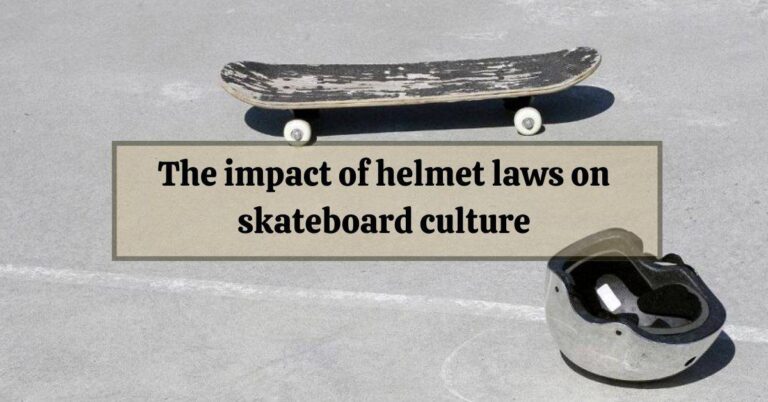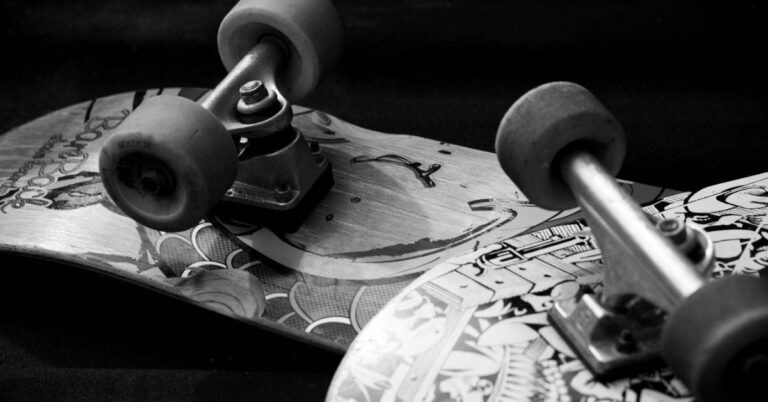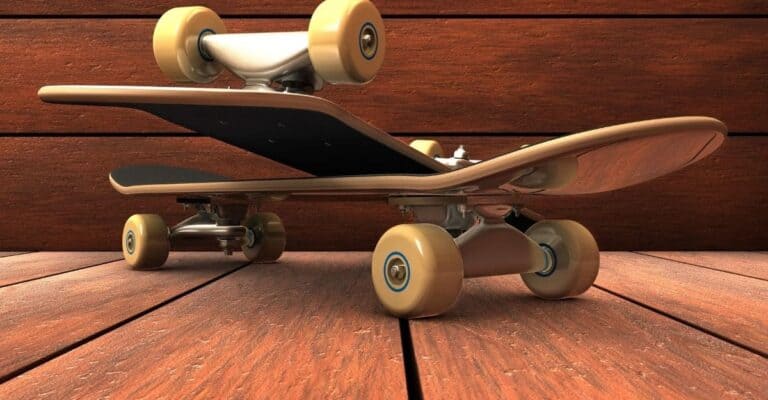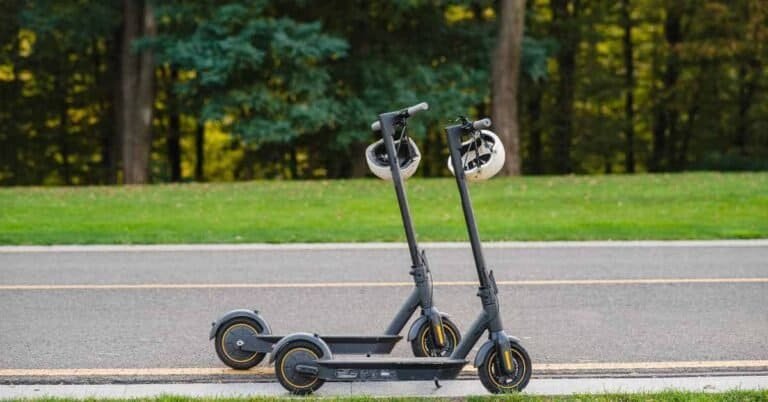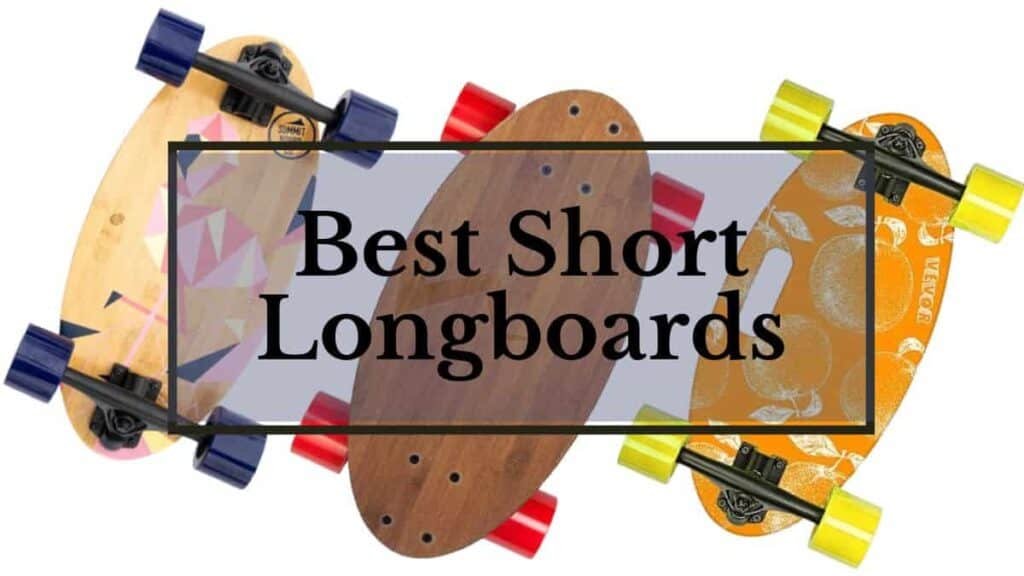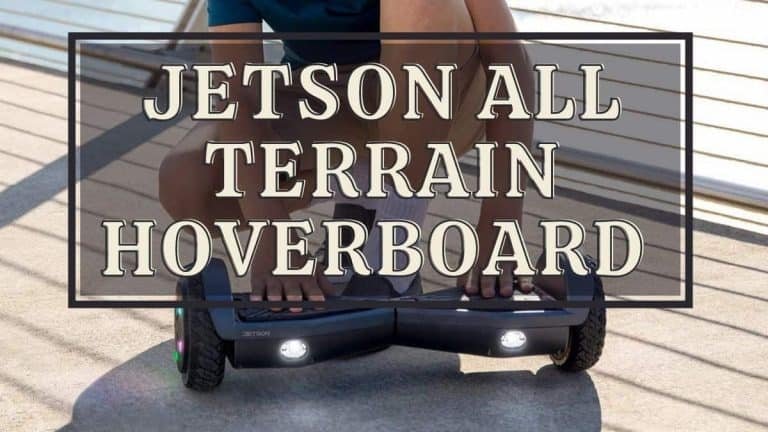Today, we're strapping on our metaphorical helmets to delve into a topic that's been grinding the gears of skateboard enthusiasts worldwide—Helmet Laws. Join us as we kickflip through the landscape of the Impact of Helmet Laws on Skateboard Culture. Skateboarding isn't just a sport; it's a … [Read More...]
Wie Sie sicher auf https://sgcasino-germany.de/ Geld einzahlen können
In diesem Artikel werden wir die besten Methoden zur sicheren Einzahlung von Geld auf sg casino erfahrungen untersuchen. Wir werden uns verschiedene Zahlungsmethoden ansehen, die von Spielern empfohlen werden, und ihre Erfahrungen und Tipps teilen, um sicherzustellen, dass Ihre Transaktionen sowohl schnell als auch sicher sind. Zudem werden wir auf häufige Fragen zur Auszahlung und den Bonusangeboten eingehen.
- Beliebte Zahlungsmethoden auf sg casino
- Sicherheitsmaßnahmen beim Geldtransfer
- Erfahrungen von Spielern beim Einzahlen
- Bonusaktionen und ihre Bedingungen
- Die Dauer der Auszahlungen auf sg casino
- Häufige Probleme und Lösungen beim Einzahlungsvorgang
- Fazit und Empfehlungen für neue Spieler
Beliebte Zahlungsmethoden auf sg casino: Ein Überblick über die Optionen
Das Einzahlen von Geld auf sg casino ist einfach und sicher, dank einer Vielzahl von Zahlungsmethoden. Zu den beliebtesten Optionen gehören Kreditkarten, E-Wallets und Banküberweisungen. Diese Methoden bieten Spielern die Flexibilität, die sie benötigen, um ihre Einzahlungen schnell abzuwickeln. Spieler schätzen besonders die Möglichkeit, mit E-Wallets wie PayPal oder Skrill zu arbeiten, da diese oft sofortige Transaktionen ermöglichen.
„Ich benutze seit Jahren PayPal für meine Einzahlungen auf sg casino. Die Transaktionen sind immer schnell und ich fühle mich sicher dabei“, erzählt Thomas K., ein begeisterter Spieler aus Berlin. Die Vielfalt der Zahlungsmöglichkeiten ist ein weiterer Grund, warum viele sich für dieses Online Casino entscheiden.
Die sg casino app bietet auch eine benutzerfreundliche Oberfläche, die das Einzahlen von Geld noch einfacher macht. Spieler können ihre bevorzugte Zahlungsmethode auswählen und sofort mit dem Spielen beginnen. Durch die großen Anbieter, die sg casino unterstützt, können Spieler sicher sein, dass ihre Daten geschützt sind.
Sicherheitsmaßnahmen beim Geldtransfer: So schützen Sie Ihre Daten
Die Sicherheit Ihrer persönlichen und finanziellen Daten ist von größter Bedeutung, wenn Sie auf https://sgcasino-germany.de/ Geld einzahlen. Das Casino verwendet modernste Verschlüsselungstechnologien, um sicherzustellen, dass alle Transaktionen und Datenübertragungen geschützt sind. Dies gibt den Spielern ein zusätzliches Gefühl der Sicherheit.
Zusätzlich zu den technischen Maßnahmen bietet sg casino auch regelmäßige Sicherheitsüberprüfungen an, um sicherzustellen, dass alle Systeme auf dem neuesten Stand sind. Spieler sollten sich immer bewusst sein, dass Sicherheit nicht nur von der Plattform abhängt, sondern auch von ihren eigenen Praktiken, wie der Verwendung starker Passwörter.
Erfahrungen von Spielern beim Einzahlen: Was sagen die Nutzer?
Spieler haben durchweg positive Erfahrungen gemacht, wenn es um Einzahlungen auf sg casino geht. Viele berichten von schnellen Transaktionen und einer benutzerfreundlichen Oberfläche. „Ich habe noch nie Probleme beim Einzahlen gehabt. Alles lief reibungslos und die Bestätigung kam sofort“, sagt Max T., ein neuer Spieler.
Einige Spieler heben auch die Klarheit der Einzahlungsschritte hervor. „Die Anleitung zur Einzahlung ist sehr verständlich, ich musste nicht lange suchen“, erklärt Lisa H., die häufig die sg casino app nutzt. Es ist wichtig zu wissen, dass die Plattform sehr transparent ist, was Gebühren und Limits angeht, was das Spielerlebnis weiter verbessert.
Dennoch gibt es gelegentlich Herausforderungen, die einige Spieler erlebt haben. „Ich hatte einmal eine kleine Verzögerung, aber der Kundenservice hat schnell reagiert und mir geholfen“, berichtet Peter R. Es ist also ratsam, den Kundenservice bei Fragen oder Problemen zu kontaktieren, um eine schnelle Lösung zu finden.
Bonusaktionen und ihre Bedingungen: Was Spieler wissen sollten
Ein attraktives Merkmal von sg casino sind die verschiedenen Bonusaktionen, die neuen und bestehenden Spielern angeboten werden. Dazu gehören Willkommensboni, Freispiele und der sg casino no deposit bonus, der es Spielern ermöglicht, ohne Einzahlung zu spielen. Es ist wichtig, die Bedingungen dieser Angebote sorgfältig zu lesen.
„Ich habe den Willkommensbonus genutzt und war begeistert von den zusätzlichen Mitteln, die ich erhalten habe. Die Umsatzbedingungen waren fair und gut erklärt“, sagt Julia S. Viele Spieler finden, dass solche Boni den Einstieg in das Spiel viel angenehmer machen.
Die Bedingungen für die Bonusaktionen sind jedoch nicht immer klar. „Manchmal ist es etwas verwirrend, welche Spiele für den Bonus zählen. Ich musste mehrmals nachfragen, bevor ich alles verstanden habe“, bemerkt Tim L. Spieler sollten sich daher immer die Zeit nehmen, die Bonusbedingungen zu verstehen, bevor sie eine Einzahlung tätigen.
Die Dauer der Auszahlungen auf sg casino: Wie lange müssen Sie warten?
Die Dauer der Auszahlungen ist ein wichtiger Aspekt für Spieler, die auf sg casino aktiv sind. In der Regel variieren die Auszahlungsmethoden, und einige sind schneller als andere. E-Wallets bieten oft die schnellsten Auszahlungen, während Banküberweisungen länger dauern können.
„Ich habe einmal eine Auszahlung über Skrill angefordert und das Geld war innerhalb von 24 Stunden auf meinem Konto. Das war wirklich beeindruckend“, sagt Martin B., ein erfahrener Spieler. Spieler sollten jedoch immer die verschiedenen Methoden vergleichen und die für ihre Bedürfnisse passende auswählen.
Die sg casino auszahlung dauer kann auch von der Höhe des Betrags abhängen. „Ich habe festgestellt, dass größere Auszahlungen manchmal länger dauern. Es ist also ratsam, kleinere Beträge auszuzahlen, wenn Sie schnell Zugriff auf Ihr Geld haben möchten“, erklärt Sarah W. Klarheit über die Auszahlungsmethoden hilft, unangenehme Überraschungen zu vermeiden.
Häufige Probleme und Lösungen beim Einzahlungsvorgang: Tipps für Spieler
Trotz der benutzerfreundlichen Plattform können Spieler gelegentlich auf Probleme stoßen, wenn sie Geld auf sg casino einzahlen. Häufige Probleme sind technische Schwierigkeiten oder Unklarheiten bei der Auswahl der Zahlungsmethode. In solchen Fällen ist es wichtig, ruhig zu bleiben und die verfügbaren Lösungen zu prüfen.
„Ich hatte einmal Schwierigkeiten mit meiner Kreditkarte, aber der Kundenservice war sehr hilfsbereit und hat mir schnell eine Lösung vorgeschlagen“, berichtet Laura K. Es ist ratsam, bei Problemen direkt den Kundenservice zu kontaktieren, anstatt zu versuchen, das Problem selbst zu lösen.
Eine weitere häufige Herausforderung ist die Verwirrung über die Einzahlungslimits. „Ich wusste nicht, dass es ein Limit für Einzahlungen gibt, und war überrascht, als meine Transaktion nicht durchging“, sagt Jens T. Spieler sollten sich immer über die Limits der von ihnen gewählten Zahlungsmethode informieren, um solche Probleme zu vermeiden.
Fazit und Empfehlungen für neue Spieler: So starten Sie sicher durch
Zusammenfassend lässt sich sagen, dass das Einzahlen von Geld auf https://sgcasino-germany.de/ sicher und einfach ist, wenn Sie die richtigen Schritte befolgen. Wählen Sie eine Zahlungsmethode, die Ihnen am besten passt, und achten Sie auf die Sicherheitsmaßnahmen der Plattform. Nutzen Sie Bonusangebote, aber lesen Sie die Bedingungen sorgfältig, um Missverständnisse zu vermeiden.
„Ich empfehle neuen Spielern, sich die Zeit zu nehmen, alles zu lernen. Die Plattform ist großartig, aber es gibt viele Details zu beachten“, sagt Kevin F., der erst vor kurzem mit dem Spielen begonnen hat. Die positiven Erfahrungen vieler Spieler zeigen, dass sg casino eine vertrauenswürdige Wahl ist.
Es ist wichtig, auch nach der ersten Einzahlung wachsam zu bleiben und alle Sicherheitsvorkehrungen zu beachten. „Ich genieße es, auf sg casino zu spielen, weil ich weiß, dass meine Daten sicher sind und ich eine gute Auswahl an Spielen habe“, schließt Lisa H. Mit diesen Tipps sind Sie gut gerüstet, um sicher und erfolgreich auf sg casino zu spielen.
Mengulas Bonus Istana Casino Terbaik yang Dapat Anda Klaim Tahun Ini
Artikel ini akan mengupas berbagai bonus terbaik dari Istana Casino yang dapat Anda klaim tahun ini. Kami akan menyajikan informasi terkait bonus yang ditawarkan, serta pengalaman nyata dari pemain yang telah memanfaatkan penawaran tersebut. Dengan berbagai testimonial dari pemain, Anda akan mendapatkan gambaran yang lebih jelas tentang cara mendaftar dan memanfaatkan bonus istana casino secara efektif.
- Mengapa Memilih Istana Casino untuk Bonus Terbaik?
- Berbagai Jenis Bonus di Istana Casino yang Dapat Anda Klaim
- Testimonial Pemain tentang Pengalaman Bonus di Istana Casino
- Cara Daftar Istana Casino dan Mengklaim Bonus Anda
- Perbandingan Bonus Istana Casino dengan Casino Lain
- Tips Menggunakan Bonus Istana Casino Secara Efektif
- Kesimpulan: Apakah Bonus Istana Casino Layak Diperhitungkan?
Mengapa Memilih Istana Casino untuk Bonus Terbaik?
Istana Casino telah menjadi salah satu pilihan utama bagi para pemain judi online di Indonesia. Salah satu alasan utamanya adalah keberadaan bonus yang menarik dan menguntungkan bagi pemain baru maupun yang sudah berpengalaman. Bonus istana casino yang ditawarkan sangat bervariasi, mulai dari bonus selamat datang, hingga bonus deposit yang memberi nilai lebih pada setiap transaksi. Dengan banyaknya penawaran ini, pemain bisa mendapatkan lebih banyak peluang untuk menang.
Selain itu, Istana Casino juga dikenal dengan sistem keamanan yang canggih. Mereka menggunakan teknologi enkripsi untuk melindungi data pribadi dan transaksi pemain. Hal ini membuat banyak pemain merasa nyaman dan aman saat melakukan permainan. Seperti yang dikatakan oleh Andi, seorang pemain setia: “Saya suka bermain di Istana Casino karena saya merasa aman dan bonus yang mereka tawarkan sangat menarik.” Ini menunjukkan bahwa keamanan dan bonus yang baik adalah kombinasi yang menarik bagi para pemain.
Dengan berbagai jenis permainan yang tersedia, Istana Casino juga menawarkan pengalaman bermain yang bervariasi. Dari slot hingga permainan meja, semua bisa ditemukan di platform ini. “Saya menikmati permainan slot di Istana Casino. Bonus yang saya dapatkan membuat saya bisa bermain lebih lama dan mencoba berbagai permainan,” ujar Siti, salah satu pemain yang telah menikmati bonus di sini. Dengan semua keunggulan ini, Istana Casino menjadi pilihan yang tepat untuk mendapatkan bonus terbaik.
Berbagai Jenis Bonus di Istana Casino yang Dapat Anda Klaim
Istana Casino menawarkan berbagai jenis bonus yang dirancang untuk menjawab kebutuhan pemain. Bonus ini meliputi bonus selamat datang, bonus deposit, dan juga bonus loyalti bagi pemain setia. Bonus selamat datang biasanya diberikan kepada pemain baru yang pertama kali mendaftar dan melakukan deposit. Ini adalah kesempatan emas untuk memulai permainan dengan modal lebih banyak.
Bonus deposit juga menjadi favorit banyak pemain. Setiap kali Anda melakukan deposit, Anda bisa mendapatkan persentase tambahan sebagai bonus. Misalnya, jika Anda melakukan deposit sebesar Rp 1.000.000, Anda bisa mendapatkan bonus tambahan hingga 50% tergantung pada promosi yang sedang berlangsung. “Saya selalu memanfaatkan bonus deposit setiap kali saya bermain. Ini membantu saya untuk meningkatkan peluang menang,” kata Budi, pemain yang aktif di Istana Casino.
Selain itu, ada juga bonus untuk permainan tertentu, terutama permainan slot. Istana Casino sering mengadakan promosi untuk permainan slot dengan RTP tinggi, yang membuatnya semakin menarik. Melihat tabel berikut untuk lebih jelasnya tentang jenis bonus yang tersedia:
| Jenis Bonus | Deskripsi | Persentase Bonus |
|---|---|---|
| Bonus Selamat Datang | Diberikan kepada pemain baru saat melakukan deposit pertama. | 100% |
| Bonus Deposit | Bonus tambahan untuk setiap deposit yang dilakukan. | 50% – 100% |
| Bonus Slot | Promosi khusus untuk permainan slot dengan RTP tinggi. | Beragam |
Testimonial Pemain tentang Pengalaman Bonus di Istana Casino
Pengalaman pemain sering kali menjadi indikator terbaik untuk menilai kualitas layanan di Istana Casino. Banyak pemain yang telah berbagi kisah sukses mereka setelah memanfaatkan bonus yang ditawarkan. Seperti yang diungkapkan oleh Rina, “Saya mulai bermain di Istana Casino karena bonus selamat datang. Dengan bonus itu, saya bisa mencoba berbagai permainan dan akhirnya menang besar!”
Namun, tidak semua pengalaman pemain sama. Beberapa pemain mengungkapkan bahwa mereka merasa sulit untuk memenuhi syarat taruhan yang ditetapkan untuk menarik bonus. “Saya mendapatkan bonus yang bagus, tapi syarat taruhan terlalu tinggi. Ini membuat saya frustrasi,” kata Joko, yang merupakan pemain yang lebih baru. Hal ini menunjukkan bahwa meskipun bonusnya menarik, penting untuk membaca syarat dan ketentuan dengan teliti.
Sementara itu, ada juga pemain yang sangat puas dengan layanan pelanggan yang disediakan. “Ketika saya mengalami masalah saat menarik bonus, tim dukungan pelanggan sangat membantu. Mereka menjawab dengan cepat dan menyelesaikan masalah saya,” ungkap Lila, pemain yang telah menggunakan Istana Casino selama lebih dari setahun. Testimonial seperti ini menunjukkan bahwa pelayanan pelanggan yang baik juga berkontribusi pada pengalaman positif pemain.
Cara Daftar Istana Casino dan Mengklaim Bonus Anda
Untuk mulai bermain di Istana Casino dan memanfaatkan bonus yang ditawarkan, langkah pertama adalah melakukan pendaftaran. Proses pendaftaran sangat sederhana dan bisa dilakukan dalam beberapa langkah saja. Anda hanya perlu mengunjungi istana casino login, mengisi formulir pendaftaran, dan mengikuti instruksi yang diberikan.
Setelah pendaftaran berhasil, Anda perlu melakukan deposit untuk mengklaim bonus selamat datang. Pastikan Anda memilih metode pembayaran yang sesuai, seperti istana casino deposit pulsa, yang memungkinkan Anda untuk melakukan transaksi dengan cepat dan aman. “Saya menggunakan deposit pulsa dan semuanya berjalan lancar. Bonus selamat datang saya langsung masuk ke akun setelah deposit,” ujar Nia, yang baru saja mendaftar.
Setelah mendapatkan bonus, penting untuk membaca syarat dan ketentuan yang berlaku. Setiap bonus memiliki aturan yang berbeda, terutama mengenai syarat taruhan. “Saya selalu memeriksa syarat taruhan sebelum mulai bermain. Ini membantu saya merencanakan strategi permainan,” kata Rudi, pemain berpengalaman di Istana Casino. Dengan memahami proses ini, Anda dapat memanfaatkan bonus istana casino dengan maksimal.
Perbandingan Bonus Istana Casino dengan Casino Lain
Ketika membandingkan bonus dari Istana Casino dengan casino lain, terlihat bahwa Istana Casino menawarkan beberapa keuntungan yang tidak dimiliki oleh platform lain. Misalnya, bonus selamat datang yang sangat menarik dan persentase bonus deposit yang lebih tinggi. Banyak casino lain hanya menawarkan 20-30% untuk bonus deposit, sementara Istana Casino bisa memberikan hingga 100% untuk pemain baru.
Selain itu, bonus loyalti di Istana Casino juga lebih menguntungkan dibandingkan dengan casino lain. “Saya telah mencoba beberapa casino online, tetapi bonus loyalti di Istana Casino jauh lebih baik. Mereka memberi saya cashback yang signifikan,” ungkap Arief, seorang pemain yang telah beralih ke Istana Casino. Ini menunjukkan bahwa Istana Casino menghargai pelanggan setianya dengan cara yang lebih baik.
Namun, penting untuk dicatat bahwa tidak semua pemain memiliki pengalaman yang sama. Beberapa pemain mungkin menemukan bahwa syarat taruhan di Istana Casino lebih ketat dibandingkan dengan casino lain. “Saya suka bonusnya, tapi syarat taruhan membuat saya sulit untuk menarik kemenangan,” keluh Fajar, pemain yang baru-baru ini mencoba Istana Casino setelah bermain di casino lain. Oleh karena itu, penting untuk selalu membandingkan dan memilih yang terbaik sesuai dengan kebutuhan Anda.
Tips Menggunakan Bonus Istana Casino Secara Efektif
Untuk memaksimalkan penggunaan bonus istana casino, ada beberapa tips yang bisa Anda terapkan. Pertama, selalu baca syarat dan ketentuan bonus dengan teliti. Memahami syarat taruhan dan batas waktu untuk menggunakan bonus akan membantu Anda merencanakan permainan dengan lebih baik. “Saya selalu membaca syarat sebelum mengklaim bonus. Ini membuat saya bisa bermain lebih strategis,” ungkap Fitri, pemain yang sangat memperhatikan detail ini.
Kedua, pilih permainan yang memberikan RTP (Return to Player) tinggi. Ini akan meningkatkan peluang Anda untuk menang. “Setiap kali saya bermain slot, saya selalu memilih yang memiliki RTP lebih dari 95%. Bonus saya jadi lebih menguntungkan,” ujar Dika, pemain yang berpengalaman. Dengan memilih permainan yang tepat, Anda bisa memanfaatkan bonus dengan lebih baik.
Terakhir, jangan ragu untuk menghubungi layanan pelanggan jika Anda menghadapi masalah atau memiliki pertanyaan tentang bonus. Tim dukungan pelanggan di Istana Casino dikenal responsif dan siap membantu. “Ketika saya bingung tentang bonus saya, mereka selalu siap memberikan penjelasan yang saya butuhkan. Ini sangat membantu!” kata Tania, pemain yang sangat menghargai layanan pelanggan di Istana Casino.
Kesimpulan: Apakah Bonus Istana Casino Layak Diperhitungkan?
Secara keseluruhan, bonus istana casino yang ditawarkan oleh Istana Casino sangat layak diperhitungkan untuk para pemain judi online. Dengan berbagai jenis bonus yang tersedia, serta pengalaman positif dari banyak pemain, Istana Casino memberikan nilai tambah yang signifikan bagi para penggemar judi. Namun, penting untuk selalu membaca syarat dan ketentuan untuk memastikan Anda bisa memanfaatkan bonus tersebut dengan sebaik-baiknya.
Testimonial dari pemain yang telah berhasil memanfaatkan bonus juga memberikan gambaran positif tentang Istana Casino. Meskipun ada beberapa pengalaman yang kurang memuaskan terkait syarat taruhan, banyak pemain yang merasa bahwa bonus tersebut tetap memberikan peluang yang baik untuk menang. “Saya tidak pernah menyesal bermain di Istana Casino. Bonusnya sangat membantu saya,” kata Kevin, seorang pemain yang telah lama bertransaksi di platform ini.
Dengan semua informasi yang telah dibahas, Anda kini bisa membuat keputusan yang lebih baik mengenai apakah Istana Casino adalah pilihan yang tepat untuk Anda. Dengan strategi yang tepat dan pemahaman yang baik tentang bonus, Anda bisa meningkatkan peluang kemenangan dan menikmati pengalaman bermain yang lebih menyenangkan.
Πώς να Χρησιμοποιήσετε την Εφαρμογή του SG Casino στο Κινητό
Αν είστε λάτρης του διαδικτυακού τζόγου και έχετε ακούσει για την εφαρμογή του SG Casino, αυτό το άρθρο είναι για εσάς. Εδώ θα εξερευνήσουμε πώς να κατεβάσετε και να χρησιμοποιήσετε την εφαρμογή στο κινητό σας, καθώς και τα πλεονεκτήματα που προσφέρει. Από την εγγραφή σας μέχρι τις στρατηγικές παιχνιδιού, θα σας καθοδηγήσουμε βήμα προς βήμα. Ας ανακαλύψουμε το sg casino gr και πώς μπορείτε να απολαύσετε την εμπειρία του παιχνιδιού εν κινήσει.
- Πώς να Κατεβάσετε την Εφαρμογή SG Casino
- Διαδικασία Εγγραφής στο SG Casino μέσω Κινητού
- Πώς να Συνδεθείτε στο SG Casino με την Εφαρμογή
- Πλεονεκτήματα και Μειονεκτήματα της Εφαρμογής SG Casino
- Στρατηγικές Παιχνιδιού στο SG Casino μέσω Κινητού
- Συχνές Ερωτήσεις για την Εφαρμογή SG Casino
Πώς να Κατεβάσετε την Εφαρμογή SG Casino στο Κινητό σας με Ευκολία
Η διαδικασία για να κατεβάσετε την εφαρμογή του SG Casino είναι αρκετά απλή. Αρχικά, μπορείτε να επισκεφθείτε την επίσημη ιστοσελίδα του SG Casino για να βρείτε τον κατάλληλο σύνδεσμο για το κατέβασμα. Αν είστε χρήστης Android, θα πρέπει να επιτρέψετε την εγκατάσταση εφαρμογών από άγνωστες πηγές στις ρυθμίσεις σας. Για τους χρήστες iOS, η εφαρμογή διατίθεται μέσω του App Store, απλώς αναζητώντας “SG Casino”.
Αφού κατεβάσετε την εφαρμογή, η εγκατάσταση είναι εύκολη. Απλώς πατήστε το εικονίδιο της εφαρμογής και ακολουθήστε τις οδηγίες στην οθόνη. Αν έχετε χρησιμοποιήσει παρόμοιες εφαρμογές στο παρελθόν, θα διαπιστώσετε ότι η διαδικασία είναι οικεία και γρήγορη. Τελικά, ετοιμαστείτε να εξερευνήσετε τον κόσμο του τζόγου μέσω του κινητού σας!
Διαδικασία Εγγραφής στο SG Casino μέσω Κινητού για Νέους Παίκτες
Αφού εγκαταστήσετε την εφαρμογή, η επόμενη κίνηση είναι να εγγραφείτε. Η διαδικασία είναι γρήγορη και εύκολη, σχεδιασμένη για να σας επιτρέπει να αρχίσετε να παίζετε το συντομότερο δυνατόν. Ανοίξτε την εφαρμογή και επιλέξτε την επιλογή “Εγγραφή”. Θα χρειαστεί να συμπληρώσετε κάποια βασικά στοιχεία όπως το όνομά σας, τη διεύθυνση email σας και μια ισχυρή κωδικοποίηση.
Μην ξεχάσετε να ελέγξετε αν η διεύθυνση email σας είναι σωστή, καθώς θα λάβετε έναν σύνδεσμο επιβεβαίωσης. Αφού κάνετε κλικ στον σύνδεσμο, μπορείτε να επιστρέψετε στην εφαρμογή και να ολοκληρώσετε την εγγραφή σας. Ενδεχομένως να χρειαστεί να δώσετε και κάποια στοιχεία ταυτοποίησης για λόγους ασφαλείας, αλλά αυτό είναι κάτι που συμβαίνει σε όλες τις διαδικτυακές πλατφόρμες.
Πώς να Συνδεθείτε στο SG Casino με την Εφαρμογή και να Ξεκινήσετε
Μόλις ολοκληρώσετε την εγγραφή σας, είστε έτοιμοι να συνδεθείτε στο SG Casino. Ανοίξτε την εφαρμογή και επιλέξτε την επιλογή “Σύνδεση”. Εδώ θα χρειαστεί να εισάγετε το όνομα χρήστη και τον κωδικό σας. Είναι σημαντικό να θυμάστε ότι η ασφάλεια των στοιχείων σας είναι προτεραιότητα, οπότε χρησιμοποιήστε έναν ισχυρό κωδικό που δεν χρησιμοποιείτε σε άλλες πλατφόρμες.
Αν έχετε ξεχάσει τον κωδικό σας, υπάρχει η επιλογή “Ξέχασα τον κωδικό” που σας καθοδηγεί στη διαδικασία επαναφοράς. Μόλις συνδεθείτε, θα έχετε πρόσβαση σε όλα τα παιχνίδια και τις προσφορές που προσφέρει το SG Casino. Η διεπαφή είναι φιλική προς τον χρήστη, οπότε δεν θα έχετε προβλήματα στην πλοήγηση.
Πλεονεκτήματα και Μειονεκτήματα της Εφαρμογής SG Casino για Κινητά
| Πλεονεκτήματα | Μειονεκτήματα |
|---|---|
| Εύκολη πρόσβαση σε παιχνίδια εν κινήσει | Ενδέχεται να υπάρχουν περιορισμοί στο παιχνίδι ανάλογα με την περιοχή |
| Φιλική προς τον χρήστη διεπαφή | Ορισμένα παιχνίδια δεν είναι διαθέσιμα στην κινητή έκδοση |
| Συχνές προσφορές και μπόνους για κινητούς χρήστες | Πιθανές καθυστερήσεις σε σύνδεση σε περιοχές με αδύνατο σήμα |
Όταν μιλάμε για την εφαρμογή του SG Casino, υπάρχουν ορισμένα πλεονεκτήματα που είναι αδύνατο να αγνοηθούν. Πρώτα απ’ όλα, η δυνατότητα να παίζετε οπουδήποτε και οποτεδήποτε είναι εξαιρετική. Είτε περιμένετε στο λεωφορείο είτε χαλαρώνετε στο καναπέ σας, μπορείτε να βυθιστείτε στον κόσμο του τζόγου.
Ωστόσο, υπάρχουν και κάποια μειονεκτήματα που πρέπει να λάβετε υπόψη. Για παράδειγμα, ορισμένα παιχνίδια μπορεί να μην είναι διαθέσιμα στην κινητή έκδοση, κάτι που μπορεί να περιορίσει τις επιλογές σας. Επίσης, αν βρίσκεστε σε περιοχή με κακή σύνδεση, μπορεί να συναντήσετε καθυστερήσεις ή ακόμη και αποσυνδέσεις.
Στρατηγικές Παιχνιδιού στο SG Casino μέσω Κινητού για Μέγιστη Απόλαυση
Όταν παίζετε στο SG Casino μέσω κινητού, είναι σημαντικό να έχετε μια στρατηγική. Μια καλή τακτική είναι να δοκιμάσετε πρώτα τα παιχνίδια δωρεάν, αν αυτή η επιλογή είναι διαθέσιμη. Αυτό σας επιτρέπει να εξοικειωθείτε με τους κανόνες και τις μηχανικές του παιχνιδιού χωρίς να ρισκάρετε χρήματα. Μόλις νιώσετε άνετα, μπορείτε να αρχίσετε να παίζετε με πραγματικά χρήματα.
Σκεφτείτε επίσης να θέσετε ένα όριο στα στοιχήματά σας. Είναι εύκολο να παρασυρθείτε όταν παίζετε μέσω κινητού, αλλά η ρύθμιση ενός προϋπολογισμού μπορεί να σας βοηθήσει να διατηρήσετε τον έλεγχο. Καλό είναι να έχετε και μια στρατηγική εξόδου — αν φτάσετε σε ένα συγκεκριμένο ποσό κερδών ή ζημιών, ίσως είναι καλύτερα να σταματήσετε για εκείνη τη μέρα.
- Δοκιμάστε πρώτα δωρεάν παιχνίδια για εξοικείωση.
- Θέστε όρια στα στοιχήματα σας.
- Επιλέξτε παιχνίδια που γνωρίζετε καλά.
- Μάθετε από τις στρατηγικές άλλων παικτών.
Συχνές Ερωτήσεις για την Εφαρμογή SG Casino και την Χρησιμοποίησή της
Αρκετοί παίκτες έχουν απορίες σχετικά με την εφαρμογή του SG Casino. Μία από τις πιο συχνές ερωτήσεις είναι αν η εφαρμογή είναι ασφαλής. Η απάντηση είναι ναι, καθώς το SG Casino χρησιμοποιεί προηγμένες τεχνολογίες κρυπτογράφησης για να προστατεύσει τα προσωπικά σας δεδομένα. Είναι πάντα καλό να διαβάζετε κριτικές και να ενημερώνεστε για τις τελευταίες εξελίξεις.
Μια άλλη συχνή απορία αφορά την υποστήριξη πελατών. Η εφαρμογή προσφέρει 24/7 υποστήριξη μέσω ζωντανής συνομιλίας και email, οπότε αν αντιμετωπίσετε οποιοδήποτε πρόβλημα, μπορείτε να επικοινωνήσετε άμεσα με το τμήμα εξυπηρέτησης πελατών. Είναι σημαντικό να γνωρίζετε ότι ποτέ δεν είστε μόνοι όταν παίζετε στο SG Casino.
- 1
- 2
- 3
- …
- 73
- Next Page »
